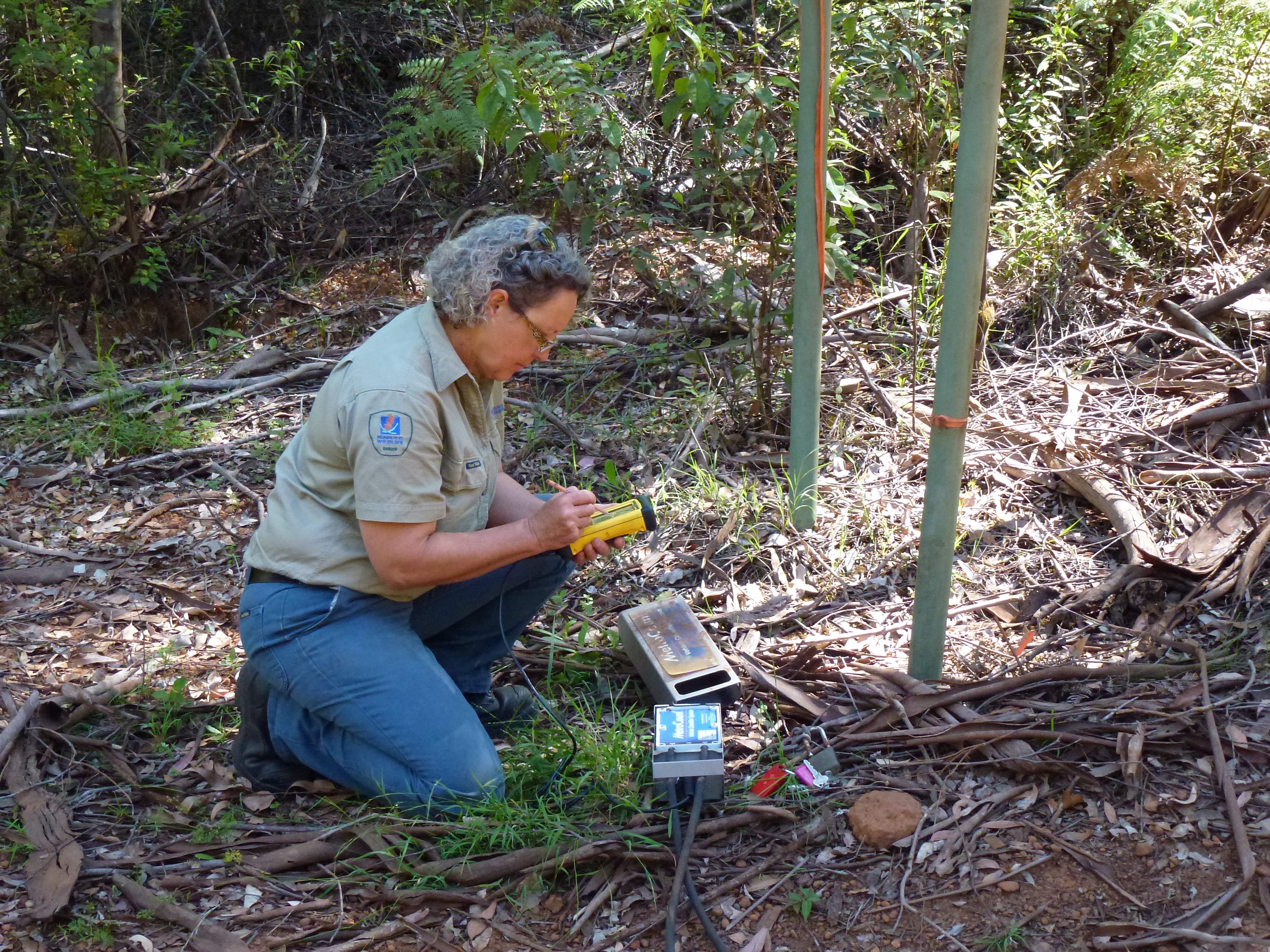|
Bossiaea Calcicola
''Bossiaea calcicola'' is a species of flowering plant in the family Fabaceae and is endemic to the far west of Western Australia. It is compact, glaucous, spiny shrub with oblong, wedge-shaped or round leaves and bright yellow, reddish and greenish-yellow flowers. Description ''Bossiaea calcicola'' is a compact, glaucous, spiny shrub that typically grows to a height of up to with branchlets that are oval to flattened when young. The stems are winged, more or less glabrous with winged cladodes wide. The leaves are oblong, wedge-shaped to more or less round, long and wide. The flowers are arranged singly or in small groups, each flower on a pedicel long with one or more oblong or egg-shaped bracts long. The sepals are joined at the base forming a tube long, the two upper lobes long and the lower three lobes long with an oblong bracteole long near the base. The standard petal is bright yellow with a reddish base around two greenish-yellow "eyes" and long, the wings lon ... [...More Info...] [...Related Items...] OR: [Wikipedia] [Google] [Baidu] |
James Henderson Ross
James Henderson Ross (born 1941) is an Australian botanist. Authority abbreviation References {{DEFAULTSORT:Ross, James Henderson Living people 1941 births 20th-century Australian botanists ... [...More Info...] [...Related Items...] OR: [Wikipedia] [Google] [Baidu] |
Binomial Nomenclature
In taxonomy, binomial nomenclature ("two-term naming system"), also called binary nomenclature, is a formal system of naming species of living things by giving each a name composed of two parts, both of which use Latin grammatical forms, although they can be based on words from other languages. Such a name is called a binomial name (often shortened to just "binomial"), a binomen, name, or a scientific name; more informally, it is also called a Latin name. In the International Code of Zoological Nomenclature (ICZN), the system is also called nomenclature, with an "n" before the "al" in "binominal", which is a typographic error, meaning "two-name naming system". The first part of the name – the '' generic name'' – identifies the genus to which the species belongs, whereas the second part – the specific name or specific epithet – distinguishes the species within the genus. For example, modern humans belong to the genus ''Homo'' and within this genus to the species ''Hom ... [...More Info...] [...Related Items...] OR: [Wikipedia] [Google] [Baidu] |
Bossiaea
''Bossiaea'' is a genus of about 78 species of flowering plants in the pea family Fabaceae and is endemic to Australia. Plants in this genus often have stems and branches modified as cladodes, simple, often much reduced leaves, flowers with the upper two sepal lobes larger than the lower three, usually orange to yellow petals with reddish markings, and the fruit a more or less flattened pod. Description Plants in the genus ''Bossiaea'' are shrubs, often with the stems and branches modified as cladodes, the leaves simple and often reduces to scales, usually with small stipules at the base. The flowers are usually arranged singly in leaf axils, usually with two or three small bracts or bracteoles at the base of the peduncle. There are five sepals, the upper two usually larger and united higher than the lower three. The petals are mostly orange to yellow, often with darker markings and the standard is about twice as long as the sepals. The stamens are united into a sheath that i ... [...More Info...] [...Related Items...] OR: [Wikipedia] [Google] [Baidu] |
Department Of Parks And Wildlife (Western Australia)
The Department of Parks and Wildlife (DPaW) was the department of the Government of Western Australia responsible for managing lands described in the ''Conservation and Land Management Act 1984'' and implementing the state's conservation and environment legislation and regulations. The minister responsible for the department was the Minister for the Environment (Western Australia), Minister for the Environment. History The Department of Environment and Conservation (Western Australia), Department of Environment and Conservation (DEC) was separated on 30 June 2013, forming the Department of Parks and Wildlife (DPaW) and the Department of Environment Regulation (DER), both of which commenced operations on 1 July 2013. DPaW focused on managing multiple use state forests, national parks, marine parks and reserves. DER focused on environmental regulation, approvals and appeals processes, and pollution prevention. It was announced on 28 April 2017 that the Department of Parks and Wi ... [...More Info...] [...Related Items...] OR: [Wikipedia] [Google] [Baidu] |
Declared Rare And Priority Flora List
The Declared Rare and Priority Flora List is the system by which Western Australia's conservation flora are given a priority. Developed by the Government of Western Australia's Department of Environment and Conservation, it was used extensively within the department, including the Western Australian Herbarium The Western Australian Herbarium is the state Herbarium, situated in Perth, the capital of Western Australia. It houses a collection of more than 845,000 dried specimens of plants, algae, bryophytes (mosses, liverworts and hornworts), lichens, fu .... The herbarium's journal, '' Nuytsia'', which has published over a quarter of the state's conservation taxa, requires a conservation status to be included in all publications of new Western Australian taxa that appear to be rare or endangered. The system defines six levels of priority taxa: ;X: Threatened (Declared Rare Flora) – Presumed Extinct Taxa: These are taxa that are thought to be extinct, either because they have n ... [...More Info...] [...Related Items...] OR: [Wikipedia] [Google] [Baidu] |
IBRA
The Interim Biogeographic Regionalisation for Australia (IBRA) is a biogeography, biogeographic regionalisation of Australia developed by the Australian government's Department of Sustainability, Environment, Water, Population and Communities (Australia), Department of Sustainability, Environment, Water, Population, and Communities. It was developed for use as a planning tool, for example for the establishment of a national Reserve System, national reserve system. The first version of IBRA was developed in 1993–94 and published in 1995. Within the broadest scale, Australia is a major part of the Australasia Australasian realm, biogeographic realm, as developed by the World Wide Fund for Nature. Based on this system, the world is also split into Biome#Olson & Dinerstein (1998) biomes for WWF / Global 200, 14 terrestrial habitats, also called biomes, of which eight are shared by Australia. The Australian land mass is divided into 89 bioregions and 419 Terrestrial ecoregion, subr ... [...More Info...] [...Related Items...] OR: [Wikipedia] [Google] [Baidu] |
Yalgoo (biogeographic Region)
Yalgoo is an interim Australian bioregion located in Western Australia. It has an area of . The bioregion, together with the Avon Wheatbelt and Geraldton Sandplains bioregions, is part of the larger Southwest Australia savanna ecoregion as classified by the World Wildlife Fund. Geography The Yalgoo bioregion extends southeastwards from the southern end of Shark Bay on Australia's west coast nearly to Lake Barlee in the interior of Western Australia. The western portion, known as the Edel subregion, includes the Edel Land peninsula and Dirk Hartog, Bernier, and Dorre islands, which enclose Shark Bay on the west. It also includes the coastal plain south of Shark Bay nearly to Kalbarri, where it transitions to the Geraldton Sandplains bioregion. The Edel subregion rests on the Carnarvon and Perth sedimentary basins. The Zuytdorp Cliffs line the coast from the northern end of Edel Land to the mouth of the Murchison River. Soils are generally white sands along the coast, an ... [...More Info...] [...Related Items...] OR: [Wikipedia] [Google] [Baidu] |
Geraldton Sandplains
Geraldton Sandplains is an Interim Biogeographic Regionalisation for Australia, interim Australian bioregion of Western Australia. It has an area of . The Geraldton Sandplains is part of the larger Southwest Australia savanna ecoregion, as assessed by the World Wildlife Fund. Subregions See also * Shark Bay, Western Australia References Further reading * Thackway, R and I D Cresswell (1995) ''An interim biogeographic regionalisation for Australia : a framework for setting priorities in the National Reserves System Cooperative Program'' Version 4.0 Canberra : Australian Nature Conservation Agency, Reserve Systems Unit, 1995. Biogeography of Western Australia IBRA regions Plains of Australia Mediterranean forests, woodlands, and scrub in Australia Southwest Australia {{WesternAustralia-stub ... [...More Info...] [...Related Items...] OR: [Wikipedia] [Google] [Baidu] |
Carnarvon (biogeographic Region)
The Carnarvon xeric shrublands is a deserts and xeric shrublands ecoregion of Western Australia. The ecoregion is coterminous with the Carnarvon Interim Biogeographic Regionalisation for Australia (IBRA) bioregion.IBRA Version 6.1 data Location and description The ecoregion covers an area of from the bounded by the to the west from the Peron Peninsula in up to the |
Geraldton
Geraldton (Wajarri language, Wajarri: ''Jambinu'', Wilunyu language, Wilunyu: ''Jambinbirri'') is a coastal city in the Mid West (Western Australia), Mid West region of Western Australia, north of the state capital, Perth. As of the , Geraldton had an urban population of 38,595. Geraldton is the seat of government for the City of Greater Geraldton, which also incorporates the town of Mullewa, Western Australia, Mullewa, Walkaway, Western Australia, Walkaway and large rural areas previously forming the shires of Shire of Greenough, Greenough and Shire of Mullewa, Mullewa. The Port of Geraldton is a major west coast seaport. Geraldton is an important service and logistics centre for regional mining, fishing, wheat, sheep and tourism industries. History Aboriginal Clear evidence has established Aboriginal Australians, Aboriginal people living on the west coast of Australia for at least 40,000 years, though at present it is unclear when the first Aboriginal people reached the ar ... [...More Info...] [...Related Items...] OR: [Wikipedia] [Google] [Baidu] |
Dirk Hartog Island
Dirk Hartog Island is an island off the Gascoyne (Western Australia), Gascoyne coast of Western Australia, within the Shark Bay, Western Australia, Shark Bay World Heritage Area. It is about long and between wide and is Western Australia's largest and westernmost island. It covers an area of and is approximately north of Perth. Known as by the First Nations Australian traditional custodianship, traditional custodians of the island, the Malgana people, the island is named after Dirk Hartog, a Dutch sea captain, whose ship first encountered the Western Australian coastline in 1616, close to the 26th parallel south latitude, which runs through the island. After leaving the island, Hartog continued his voyage north-east along the coast, giving the Australian mainland one of its earliest known names, Eendrachtsland, which he named after his ship ''Eendracht (1615 ship), Eendracht'', meaning "concord". The island is now the site of a major environmental reconstruction project ... [...More Info...] [...Related Items...] OR: [Wikipedia] [Google] [Baidu] |
Kalbarri National Park
Kalbarri National Park is located north of Perth, in the Mid West region of Western Australia. The major geographical features of the park include the Murchison River gorge which runs for nearly on the lower reaches of the Murchison River. Spectacular coastal cliffs are located on the coast near the mouth of the Murchison River and the town of Kalbarri. There is also an eponymous locality of the Shire of Northampton, but the boundaries of the national park and the locality are not identical. Geography Kalbarri National Park preserves the inland desert regions of red and white striped Tumblagooda sandstone east of the town of Kalbarri, particularly the lower reaches of the Murchison River and its gorge, as well as the mouth of the river by Meanarra Hill. The western edge of the park protects the coastline south of the town which features cliffs more than high. The coastal area contains several wind and water eroded rock formations including a sea stack and a natural bri ... [...More Info...] [...Related Items...] OR: [Wikipedia] [Google] [Baidu] |






